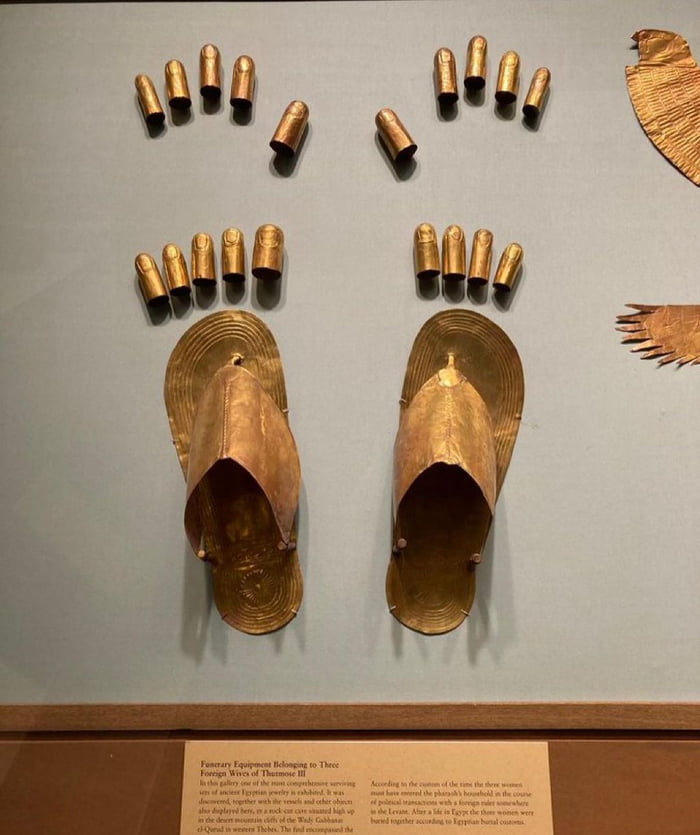Egypt Not only made of precious materials such as leather and gold, the sandals in King Tutankhamun’s tomb were also designed to help him walk more easily.

Tomb No. KV62 of King Tutankhamun, one of the most interesting discoveries of Egyptologists, attracted much attention around the world in the 1920s. While King Tutankhamun’s golden mask became a symbol statue of ancient Egypt, it was not until 2007 that experts conducted in-depth research on his sandals, according to Ancient Origins .
Although the number of sandals has not been determined, at least 80 specimens were discovered in King Tut’s intact tomb, intended to accompany him to the afterlife. Some sandals were intact while others had only small pieces of straps left. The best preserved pair of sandals is the golden sandal from King Tutankhamun’s mummy’s feet.

Andre Veldmeijer, a Dutch archaeologist, conducted research on 81 specimens stored at the Luxor Museum and the Egyptian Museum in Cairo. All were burial sandals in King Tutankhamun’s tomb, including sewn and beaded sandals made from gold, birch bark, plant fibers, precious stones, leather and gold.

DNA testing and CT scans of the mummy revealed that King Tutankhamun may have had birth defects due to inbreeding, including club feet and deformities in his feet, causing him to limp and need to use a cane. In the collection of sandals discovered in the tomb, 3 pairs had horizontal straps to help support walking.
The research team was even more surprised to see illustrations of enemies on many of King Tutankhamun’s sandals. Although experts are not sure whether these sandals were meant for wearing or symbolic. The lining of a pair of sandals features an African prisoner on one side and an Asian prisoner on the other, representing King Tutankhamun’s enemies. This design implies that every time the pharaoh took a step, he was trampling on his enemies.





